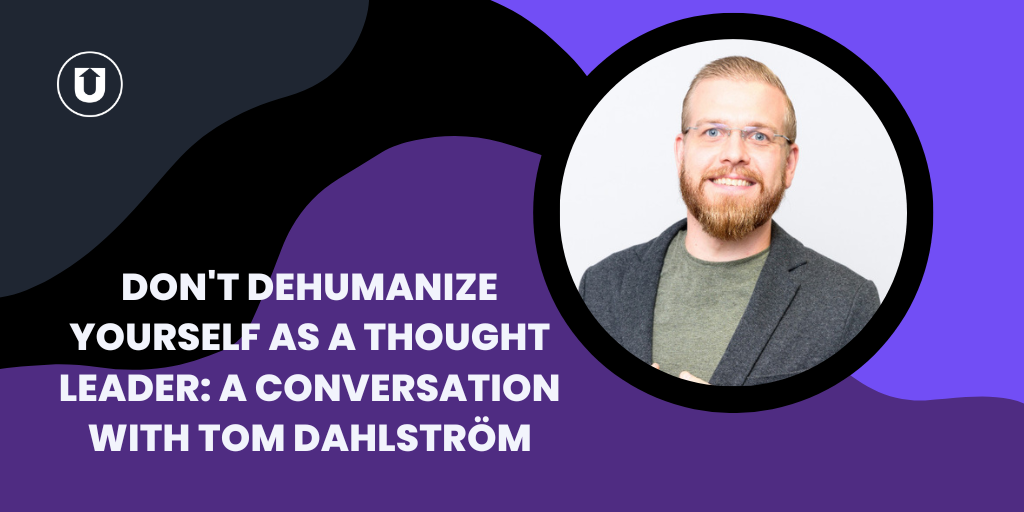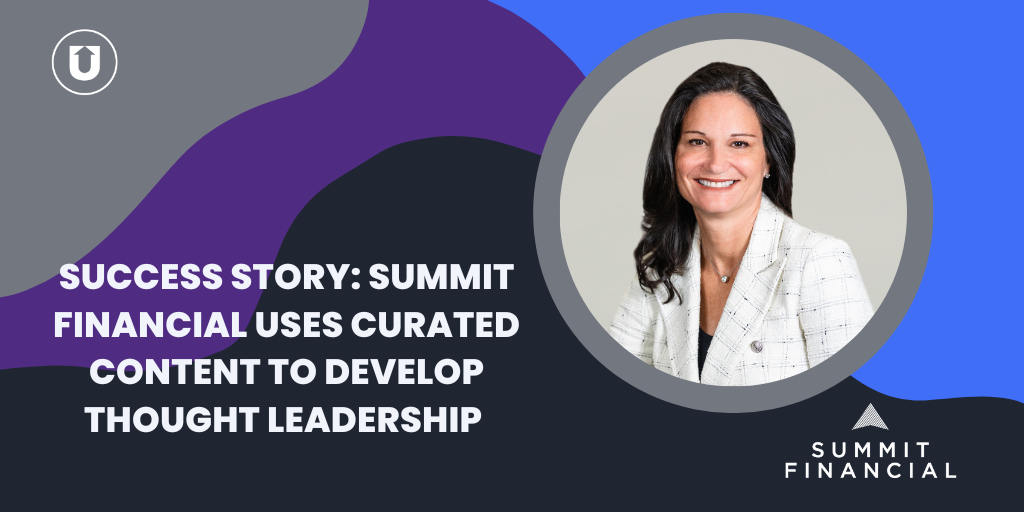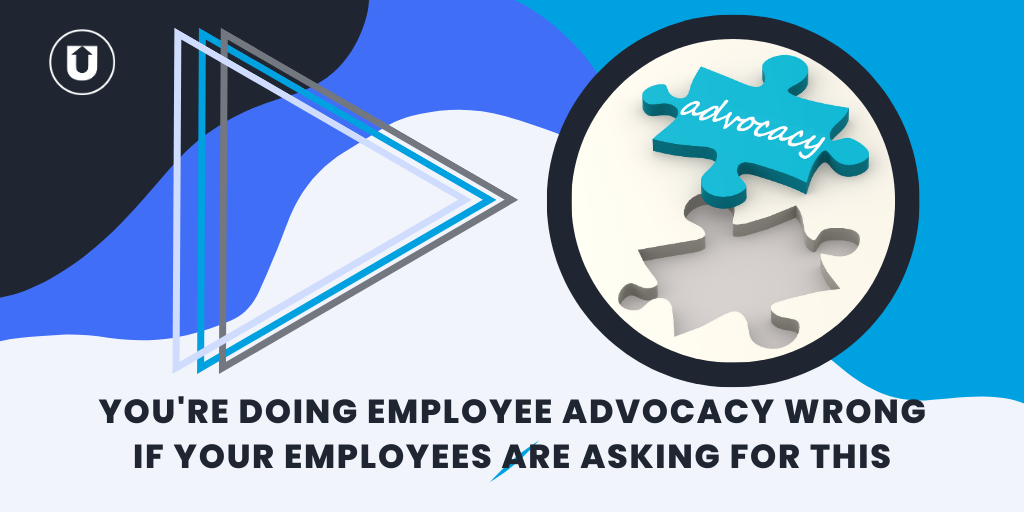Empowering Teams Through Employee Advocacy: Insights from a LinkedIn Insider

LinkedIn is no longer just a place to get active while looking for your next job.
There are over 1.1 billion professionals on LinkedIn and 68 million company pages globally. It’s no longer just a job site—it’s where people research, learn, and connect.
This shift creates an unparalleled opportunity for sales professionals to engage with potential customers and meet their audiences where they are, especially since you aren’t running into each other at the coffee shop as often (thanks, WFH lyfe).
While the value of personal branding is clear, the challenge is to encourage employees to embrace this mindset and actively participate in creating and sharing content.
Recently, we had the privilege of speaking with Jon Lyndon, a seasoned talent and sales strategy expert who spent more than nine years at LinkedIn.
He shared invaluable insights into the business value of social selling, how to motivate employees to participate, and the importance of examining your current tech stack to see if there’s anything you already have to help your employees get on board.
The Power of Personal Branding: The "Why" Behind LinkedIn for Social Selling
“Your prospects are already researching you. They’ll Google your name or look you up on LinkedIn to determine whether they trust you enough to converse. If your profile isn’t credible or active, it raises questions,” Jon starts.
He has a quote from Jeff Weiner, LinkedIn’s former CEO, hanging above his desk: “Trust equals consistency over time.”
“If you have consistency over a long period, then you reach trust, you reach value, you reach results, and you can't get to that if you're not consistent with actions or behaviors over a period of time,” Jon adds.
By regularly sharing insights, engaging with others, and building a genuine online presence, you can cultivate a strong personal brand that transcends the company's or brand's boundaries.
He added, “People aren’t just buying from companies—they’re buying from individuals who demonstrate expertise, authenticity, and a genuine willingness to help.”
Curious if there’s any number or proof to back any of this up?
If you have 100 Employee Advocates, each with a social network of 500 connections, just 10 monthly shares can create up to 500,000 potential audience touchpoints. This unlocks an extraordinary reach and visibility using resources already within your organization.
Nearly 64% of advocates participating in a formal program credit employee advocacy with attracting and developing new business, while nearly 45% attribute new revenue directly to their employee advocacy efforts.
And if you needed any further proof of the value of building your personal brand on LinkedIn, Jon shared a powerful example from his career:
“When I was laid off earlier in my career, I posted about it on LinkedIn. Within nine days, I had a job offer—not because I applied to hundreds of roles, but because an executive silently following my content for years reached out. That consistency built trust, even though I didn’t realize it at the time, certainly not how powerful it could be.”
How Do You Get People To Be Consistent With Posting On LinkedIn?
One of the biggest challenges Jon sees is that many professionals feel overwhelmed by the idea of building a personal brand or engaging in social selling. However, he encouraged starting small.
Consistent engagement—sharing relevant content, commenting on posts, or offering insights—helps professionals build credibility and deepen connections.
Jon emphasized that trust is the foundation of professional relationships, especially in sales.
“People trust people more than companies,” Jon pointed out. This is especially true on platforms like LinkedIn, where users increasingly seek to engage with authentic voices rather than polished corporate messaging.
However, fostering a culture of content sharing requires more than individual initiative.
Company leadership is crucial in setting the tone and empowering employees to participate actively.
“If you see one of your leaders or your manager sharing blogs, videos, or posts on LinkedIn, it usually creates a bit of groundswell of, ‘Oh, I should probably be thinking about this as well. I want to input some of my thoughts and ideas here.’ And I think that effect is pretty exciting,” Jon says.
“Because we said so” rarely sustains an initiative, and gamification can help spark adoption but will quickly regress if your team doesn’t see a direct impact from their efforts. They need the ‘why’. They need the context of “What does this do for me and my brand? ”
“I think when you see your peers or people that you respect and look up to are posting great content, that gives you that confidence to say, ‘Hey, I’ve got some thoughts on this topic. I want to get involved in this conversation,’” Jon says.
But how do you get someone to start posting, especially if they have never posted before or have no desire or skills to create a video or take pictures? Jon says to help your employees start where they are comfortable as individuals.
“Not everyone needs to create videos or write articles,” Jon said. “Sometimes, it’s as simple as commenting on a colleague’s post or sharing a team milestone. Those small actions add up over time.”
Offering gift cards, promotions, or contests only works for a short time, but consistently providing content your team is interested in and making it as easy as possible for them to share will help start building those habits over time, building a credible LinkedIn post history.
“Social selling, especially advocacy programs led by the company leadership, improves the company brand with people that they would have never been able to reach before because now your leaders are engaged, your employees are engaged, and that creates a positive momentum,” Jon adds.
As your employees see the impact their participation brings both to them and to their employer, naturally, more and more of your team will adopt this approach to duplicate these results.
This scale will not only drive the program’s ROI through the summation of these individual successes but bring you the scale and reach for your company messaging - resulting in direct value for your corporate communications efforts as well.
Everyone wins - and wins in a sustainable way that can continue to be built upon rather than simply achieving participation and reach via gift card and contest-induced shares that plummet as soon as the incentives are removed.
Using Tools You Already Have To Get Started With Employee Advocacy
With LinkedIn’s recent decision to sunset features like the "My Company" tab, many organizations might be finding themselves reevaluating their employee advocacy strategies.
For those who relied on these tools, Jon offered a pragmatic perspective: “The strategy shouldn’t depend on one tool. It’s about the behaviors and habits you’re encouraging—and the content you provide to support those habits. If you’ve created a culture where employees share content and engage authentically, you’ll see results regardless of the platform changes.”
He also highlighted the importance of integrating social selling into tools employees already use.
“You don’t have to invest in an expensive advocacy program right away,” Jon advised. “Start by encouraging consistent engagement where your team is already active. As you see results, you can evaluate tools that help scale those efforts.”
When we asked Jon how companies should measure the success of their social efforts, especially in the early days of their advocacy programs, Jon acknowledged that it can feel abstract at first.
“The ROI isn’t immediate, but over time, you’ll see it in stronger relationships, better conversations, and even unexpected opportunities,” he said.
“The key is to tie it [the ROI] back to trust and credibility. If people trust you, they’ll want to work with you.”
Final Thoughts: Building Habits for the Long Term
Employee advocacy is not a quick fix but a transformative approach to building meaningful, long-term professional relationships.
Jon repeatedly emphasized in our conversation that trust comes from consistent actions over time—sharing thoughtful content, engaging with your network, or simply starting a conversation.
For organizations and individuals just starting their social selling journey, Jon sums up the first steps anyone can take: “Focus on building small, consistent habits. Comment on posts. Share your perspective.
Engage with your network authentically. Over time, those actions will compound, building trust and opening doors you didn’t even know existed.”

At UpContent, we couldn’t agree more.
Social selling isn’t about flashy tactics or instant results—it’s about creating meaningful connections that drive long-term success.
Let’s Build Your Strategy Together
Social selling isn’t just the future of professional networking—it’s the present. Take the first step today and begin your journey toward lasting, meaningful connections.
We are passionate about helping businesses like yours unlock these opportunities. Content intelligence isn’t just a tool; it’s a catalyst for deeper relationships, stronger credibility, and sustained growth.
Whether you’re just starting to explore social selling or looking to elevate your existing efforts, our Content Intelligence Experts are here to guide you.
Schedule a free strategy session with one of our experts today and discover how a thoughtful, consistent content strategy can transform your approach to social selling. Together, we can turn your team into trusted advisors, strengthen your brand’s voice, and drive the results you’ve been striving for.
If you want to learn more about building your employee advocacy program, check out some of these other articles and case studies!



